As an Amazon Associate I earn from qualifying purchases.
Belgian carbonnade flamande is one of the few dishes from that little country to gain wide renown. Cousin to the more-famous French beef Bourguignon, this is a sort of hybrid stew-braise that relies on beer, not wine. Here’s how to make it.
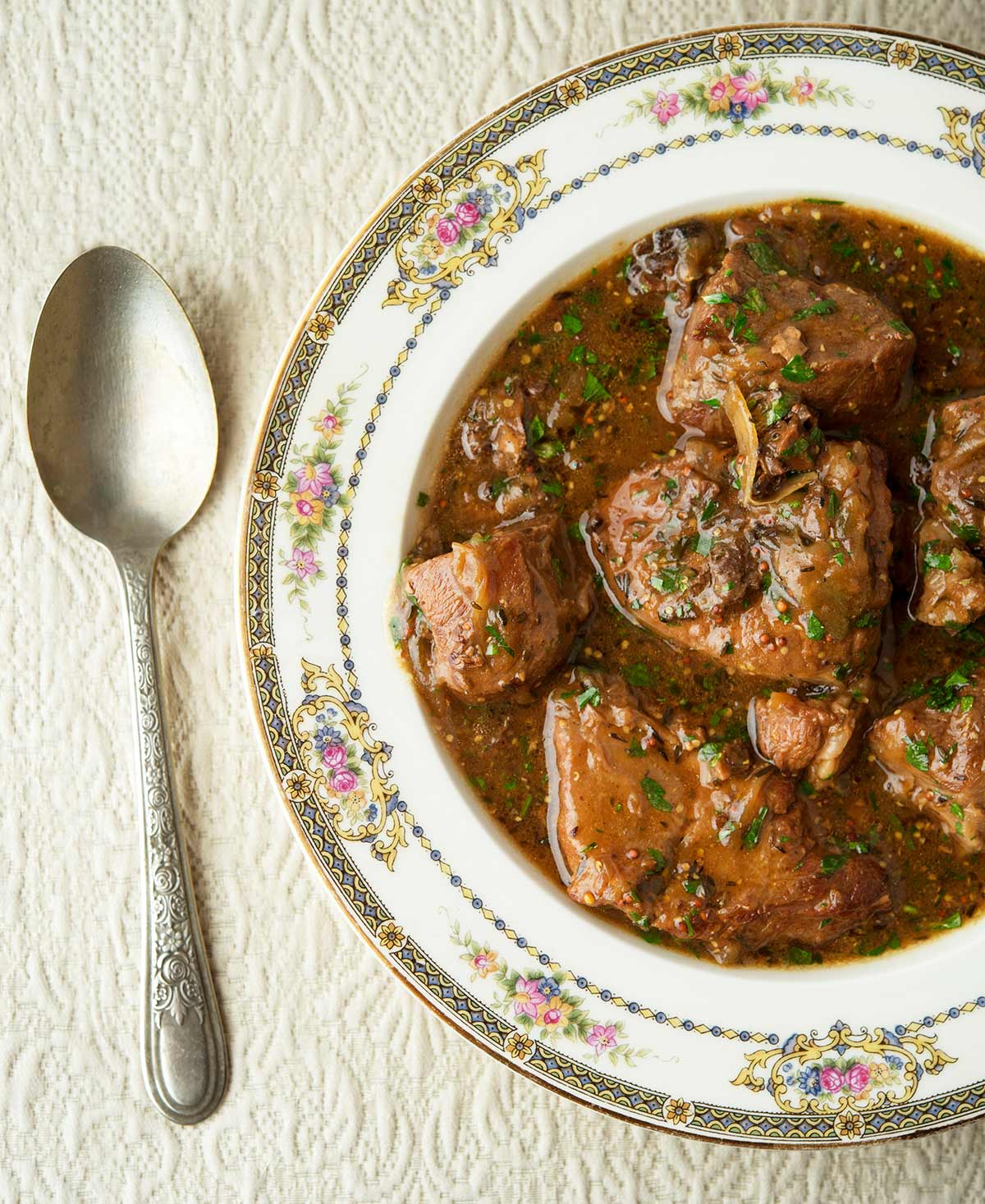
It’s hard to say when carbonnade flamande was invented, but I’d guess sometime in the Middle Ages because it relies on a little bit of sweet-and-sour that is characteristic of that age of cooking.
Regardless of its history, carbonnade (carbon-ah’d) is a damn good dish to make with any sort of red meat. In this case, an elk shank. Deer shanks, beef shanks, or any sort of shoulder or neck meat will also work fine, too.
You can take this carbonnade recipe one of two ways: as a full-on stew, or as a braise you then eat with a knife and fork alongside a starch and a vegetable; the “stew” then becomes the sauce. Holly and I ate ours with mashed potatoes and a salad. Either way you’re in for a treat.
What does it taste like? Well, I like to use the hard-working, sinewy cuts of meat because when they finally do get tender, they get super silky and nice. So you’ve got meat falling off the bone, nestled into a lot of nicely caramelized onions, wild mushrooms and sometimes carrots, which we skipped in this version.
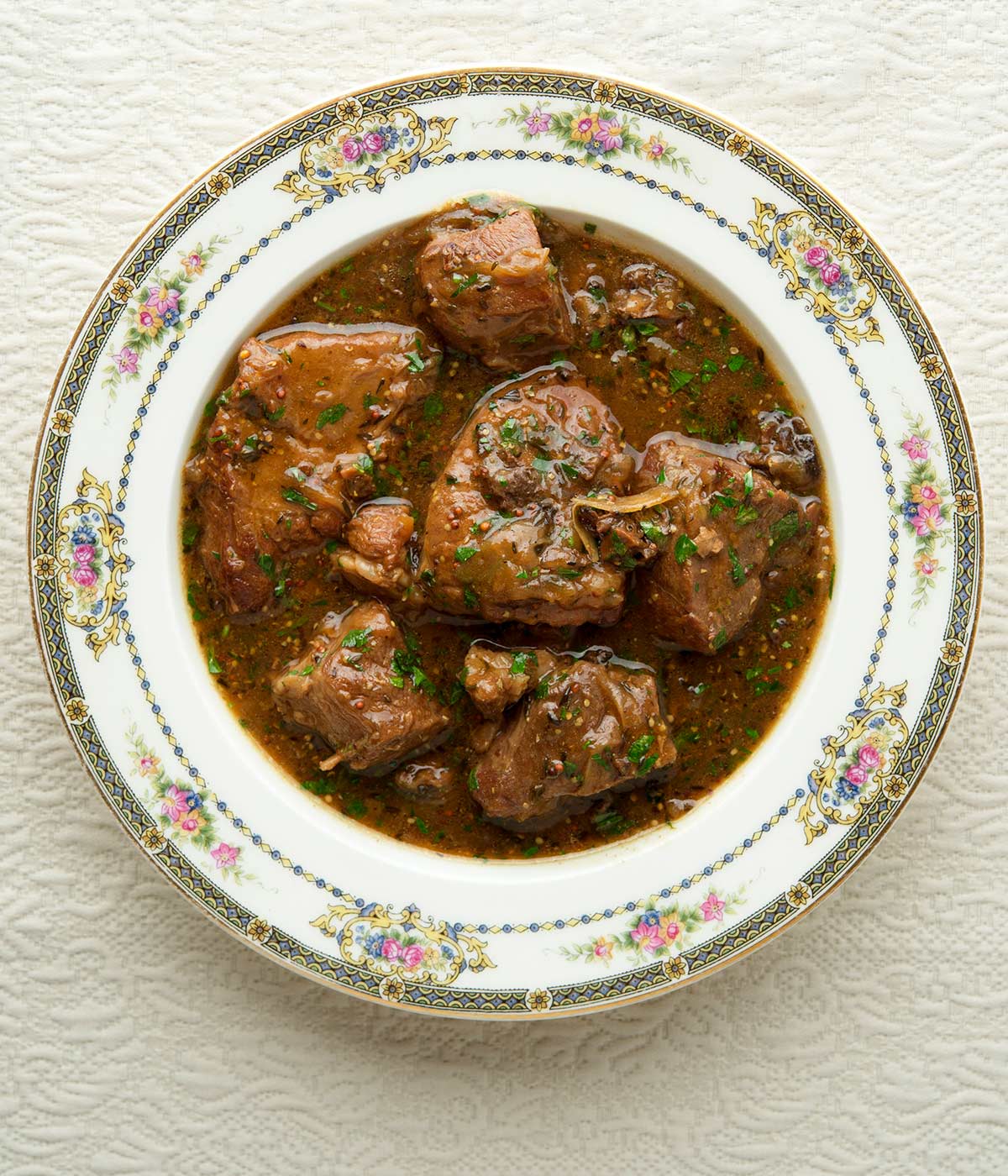
Other root vegetables are also good additions, like parsnips, turnips or rutabagas.
It’s the sauce/gravy/stew that makes Carbonnade flamande special though: Dark, rich with a very European version of that magic combination of sweet-spicy-sour-salty. Mustard, cider vinegar and a little bit of red currant jelly mixed in does this; you can use brown sugar if you can’t find red currant jelly.
It is really, really good. I mean, really good. Make it this weekend and you will thank me later.
The beer matters here. A lot. Make this with a real Belgian abbey ale and you will understand why Carbonnade flamande is such a famous dish.
The mustard is also pretty important, although not as much as the beer. Try to get a natural mustard, like a Dijon, not one with turmeric added for extra yellow. You don’t need color here, you need flavor. As for the mushrooms, I use dried morels or porcini. Any good dried mushroom will do.
Carbonnade flamande fits in well with a host of similar European stews that go well with wild game: Coq au vin, Polish bigos, French garbure, or English shepherd’s pie.
If you liked this recipe, please leave a ⭐️⭐️⭐️⭐️⭐️ rating and a comment below; I’d love to hear how everything went. If you’re on Instagram, share a picture and tag me at huntgathercook.
Belgian Carbonnade
Ingredients
- 3 pounds elk shank, venison shanks or shoulder meat
- 1/4 cup duck fat or unsalted butter
- Salt
- 3 onions, peeled and sliced root to tip
- 1 ounce dried mushrooms, rehydrated in 1 cup warm water and chopped
- 2 teaspoons dried thyme
- 3 or 4 tablespoons flour
- 2 tablespoons mustard, Dijon is best
- 1 cup venison or beef broth
- 1 or 2 bottles of beer, Belgian abbey ale is traditional
- 2 tablespoons cider vinegar
- 1 heaping tablespoon red currant jelly
- Black pepper
- Chopped parsley for garnish
Instructions
- If you are using elk shanks, cut the shank off the bone in large pieces, about 2 to 4 inches across; same thing if you are using shoulder meat. If you are using venison shanks, you can leave them whole if they will fit into your pot.
- Heat the duck fat or butter in a large Dutch oven or heavy lidded pot over medium-high heat. Pat the meat dry and brown it well on all sides. Salt them as they cook. You might need to do this in batches. Remove the pieces as they brown and set aside in a bowl.
- When the meat has all browned, add the sliced onions and mix well. Turn the heat down to medium and cook the onions until they are nicely browned and soft, which can take a solid 20 minutes. About halfway through, salt the onions and add the chopped mushrooms and thyme.
- When the onions are ready, return the meat and all juices from the bowl into the pot. Mix in the mustard, then add enough flour to dust everything in the pot.
- Stir in the mushroom soaking water (strain it if there is debris in it), the venison broth and at least one bottle of the Belgian beer. You want the meat to just barely be covered. Pour in more beer if need be. Bring to a simmer, add salt to taste, cover and cook slowly until the meat is really tender, anywhere from 90 minutes to 4 hours if it's a big ole' bull elk.
- Once the meat is tender, whisk in the red currant jelly, the vinegar and add black pepper to taste. Garnish with the chopped parsley. Serve with spaetzle, egg noodles or potatoes.
Notes
Nutrition
Nutrition information is automatically calculated, so should only be used as an approximation.
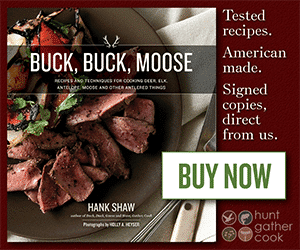
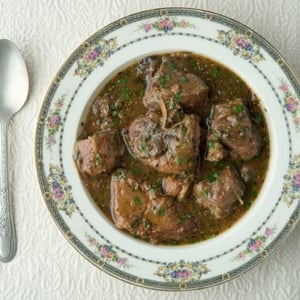
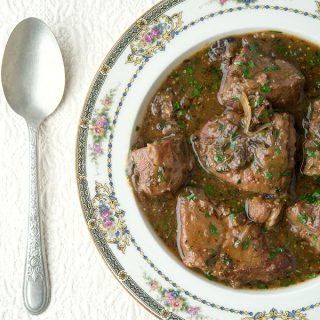




Holy cow! How did I miss this?
Damn good. Made a few changes (half fresh mushrooms/half dried–cheap beer–homemade chicken stock). Used neck from big whitetail (4lb with bones). Cut what I could off to brown first. Browned the neck also and put all in pot as directed. I like to bake at 300 instead of simmer on stove. About 3 hours, pulled neck bone out and removed meat, chopped and returned to pot. (at 2 hrs was done but connective tissue was still in tact and not nearly as tasty)
Vinegar sugar step pulls it all together. (I’m sure the currant jelly is more interesting. )
Served over polenta with a little cream cheese added and a winter squash caserole. Exceptional.
Outstanding recipe. Made mine with a moose heel of round. Don’t eat it right away – wait until the next day for a sublime experience.
I made this with assorted venison shanks that had been hiding in the bottom of the freezer. After two hours in the slow cooker boned them out and then moved the liner to the back porch to chill and finished off for dinner the next day. Quarter baby Bella mushrooms in place of dried. Total cooking time a little over four hours. Amazing with mashed potatoes. Might just add a handful of baby carrots half way along next time.
My go to recipe
I’m having a heck of a time trying to figure out what beer to use! Any recommended brand that could be found in a Bay Area semi-specialty store?
Tasha: Any Belgian beer. Chimay, Allagash, even Blue Moon.
What size beers?
Tasha: Doesn’t really matter if it’s between 12 and 16 ounces, but if you are getting the big Chimay bombers, which are 22 ounces, you only need one.
As someone who owned a Belgian beer bar and had a recipe like this on our menu, I would recommend what you look for is a dubbel style (sometimes also called a brune/brown). For an excellent beer at an extremely reasonable price, go with Leffe Brune. Yes, Chimay makes an excellent dubbel, but you will pay a premium.
Yes, you can also use a quad or a Belgian strong dark, but they are almost too rich and start interfering with the meat and other ingredients. Your call. I tweaked my recipe in the bar for years and ended up using the Leffe Brune.
I would not recommend Blue Moon, which is a witbier (wheat beer) and is not going to provide the same rich, dark flavor and has other bright flavors that will turn a bit bitter in the final product.
Great for bull elk, tender, moist, and full of flavor.
Outstanding
I’ve been doing this recipe for awhile now with elk shoulder and most recently spring bear sirloin and shoulder, (separately). I’ve only been able to find scotch ales that are pretty dark and some really good porters and stouts, I love all of them. I’ve just recently found a Belgian abbey trippel from Pikes in WA, one of the only accredited Trappist breweries. It is a lot fruitier and lighter than what I’m used to cooking this dish with. I was wondering if it will taste as good? Going to try it out anyway.
Although I am not a hunter I have “friends” and get bits and pieces. I did this dish with Venison and wow it was amazing. The flavours were exquisite and for so few ingredients they all marry together perfectly. Definitely a keeper in this house, but next time I will have to make it with home-killed beef (but I am sure it will still be great)
Used meat from a three year old antelope buck and as always, Hank’s recipe turned out fantastic. Used a local microbrew Bavarian Dunkel and chokecherry syrup. Love my “Buck, Buck, Moose! Can’t wait for the new fish recipes. Thanks Hank.
The dish itself deserves 5 stars.
My only complaint is the cooking time listed. I had already planned on the max cook time listed and I boned out my shank, but my elk shank took 8 hours before the connective tissue really broke down. That puts a damper on dinner when you’re eating at 9pm instead of 5pm
Brennan: Whoa. That has to be some kind of record! Old elk. Sorry that happened. I’ve never had one take more than five hours. I also rarely use shank for carbonnade, I mostly use chunks from the hind leg.
Can you sub bear fat for duck fat?
Madeline: Absolutely.
By far one of my most cooked recipes from Hank. I cook it at least 3x over the winter. There is usually a package or two in the freezer for a quick meal. The beer you choose is VERY important. Any hops (bitterness) is hugely magnified and can make the dish inedible. I have found we like the malty flavor of a German Dunkle for this. Leininkugels makes one as well as various imports. It is worth seeking out. . . .
I made this recipe with meat from an older bull elk. Not only did it turn out delicious but it was tender as well. This is not easy to achieve. Usually, you sacrifice flavor to get it tender or vice versa. Since then I’ve used deer meat with the same fabulous results. This recipe is a keeper.
I made this using a large, chunked up elk roast. I followed the recipe closely, substituting lingonberry preserves. Fantastically tender and the sauce was delicious! I served it over smashed potatoes. Definitely making this again!
This was great. It’s the small details that make it. From a traditional braised dish to something definitely Old European with the touch of Dijon mustard and cider vinegar.
We reduced the sauce until it was thick and the flavors intensified. With the flavorful otter meat we used some lingonberry jam added the perfect sweetness
I made this dish with beef shanks and it was delish. My only caution is to be sure and use the correct style of beer. I served it over egg noodles with home made thyme/rosemary sourdough bread and a good hardy tempranillo. Thumbs up!
Fantastic. Used chunked up venison bottom round to shorten the cooking time. Delicious!
I’ve been making shanks for years with my own recipe but after making other Hank dishes that were delicious, I wanted to try this. It was absolutely outstanding. I used Flying Fish Abby (the only Abby on hand at my local purveyor) and venison stock with two large NJ buck shanks. The flavor was wonderfully deep and complex and the smell, while it cooked, had our mouths watering all day. I served it with a side of mashed rutabagas. My wife, kids, and grandkids all loved it! I will add this one to the Sunday rotation!
I used mashed rutabaga as well, with niter kibbeh instead of butter in the mash. Delicious.
Thanks to this site, I wish deer had more shanks.